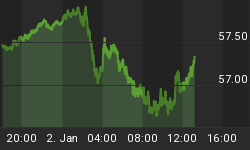A CNN Money article this weekend provided contrarian investors with a moment of clarity. "Trump and Cruz predict stock market 'crash'" the headline proclaimed. Contrarians couldn't find a more emphatic statement of mainstream bearish capitulation than that.
The market opinions of high-profile public figures are always as fascinating as they are instructive. Most public figures have only an elementary grasp on the financial markets; this is doubly true for politicians and political candidates. In instances when these figures make public predictions about the market it's almost a guaranteed contrarian bet that they'll be wrong.
"The problem with using monetary policy to juice the system is that it creates bubbles," Cruz said. Trump expressed a similar sentiment when he said Americans were "being forced into an inflated stock market and at some point they'll get wiped out."
Never mind that both statements can be disproven. A loose monetary policy doesn't create bubbles; it can feed or augment them but not create them. Bubbles are a manifestation of mass investor psychology and are the result of synchronized human endeavor. Central banks can provide liquidity to fuel asset bubbles, but the Fed has no control over how or when a bubble gets started.

As for Trump's statement that investors are "being forced into an inflated stock market," that's also untrue. No one is forcing investors into equities; if anything Wall Street has had extreme difficulty trying to persuade casual investors away from money markets and into stocks. Despite the lofty levels to which stocks have soared in recent years, direct participation among retail investors is astonishingly thin.
The Cruz/Trump crash prediction also provides insight into the mindset of the multitudes. They're still feeling fearful and uncertain about America's economic outlook. Their collective misgivings about the economy have allowed equities to rally as vigorously as they have since the February market bottom. Indeed, it seems that the "Wall of Worry" has supplanted the "Slope of Hope" as the bulls have regained command of the stock market.
The takeaway on the market prognostications of candidates Cruz and Trump is that a crash is highly unlikely in the balance of 2016. Their statements show that fears of an asset bubble and subsequent market crash are entrenched among mainstream observers. This in turn strongly suggests that the worst case scenario has already been priced into equities in the intermediate-term. Any hopes among the bears for a crash will likely have to wait until after the 2016 election is over.
Mastering Moving Averages
The moving average is one of the most versatile of all trading tools and should be a part of every investor's arsenal. Far more than a simple trend line, it's also a dynamic momentum indicator as well as a means of identifying support and resistance across variable time frames. It can also be used in place of an overbought/oversold oscillator when used in relationship to the price of the stock or ETF you're trading in.
In my latest book, Mastering Moving Averages, I remove the mystique behind stock and ETF trading and reveal a simple and reliable system that allows retail traders to profit from both up and down moves in the market. The trading techniques discussed in the book have been carefully calibrated to match today's fast-moving and sometimes volatile market environment. If you're interested in moving average trading techniques, you'll want to read this book.
Order today and receive an autographed copy along with a copy of the book, The Best Strategies for Momentum Traders. Your order also includes a FREE 1-month trial subscription to the Momentum Strategies Report newsletter: http://www.clifdroke.com/books/masteringma.html
















